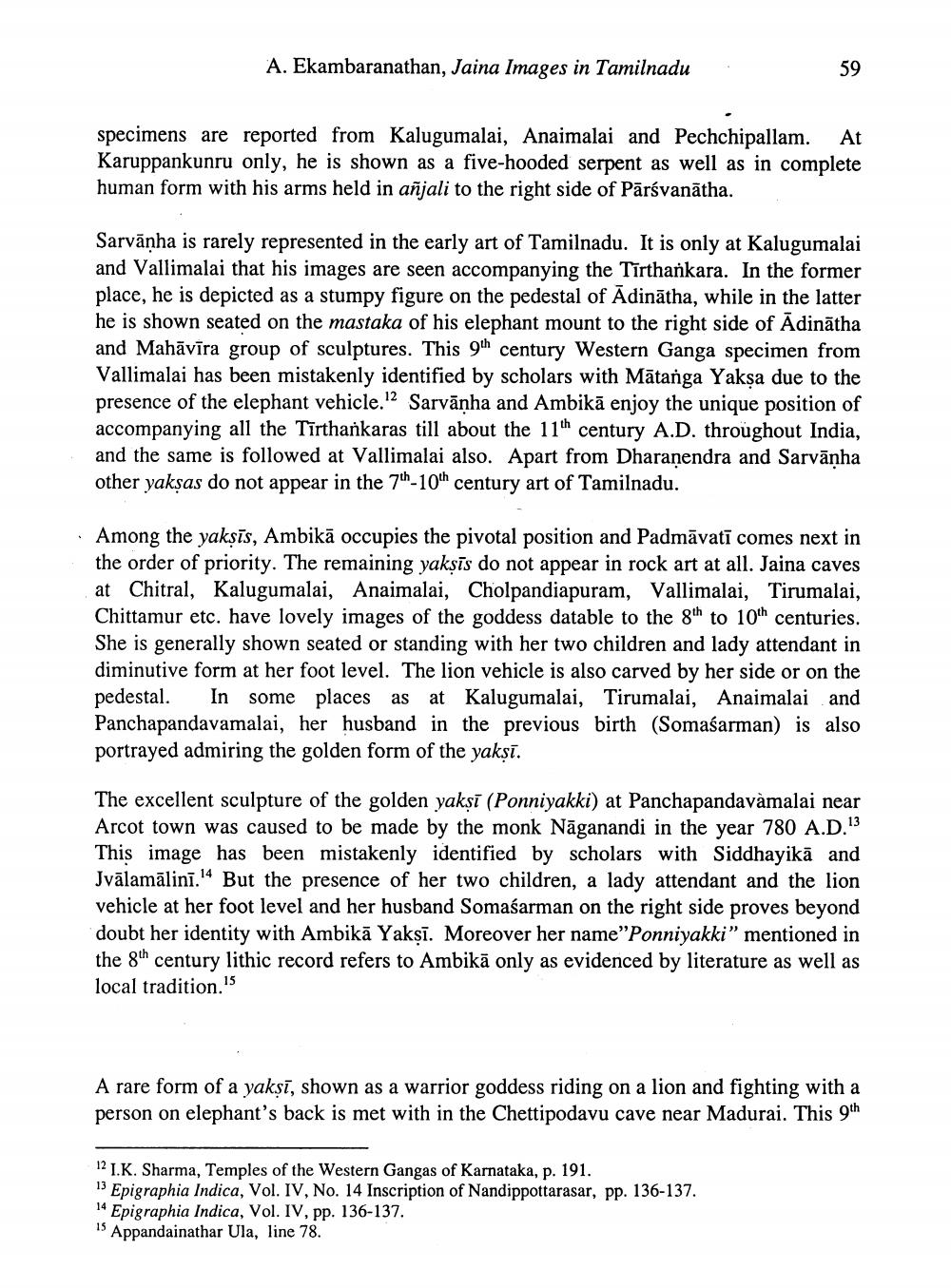________________
A. Ekambaranathan, Jaina Images in Tamilnadu
specimens are reported from Kalugumalai, Anaimalai and Pechchipallam. At Karuppankunru only, he is shown as a five-hooded serpent as well as in complete human form with his arms held in añjali to the right side of Pārsvanātha.
Şarvāṇha is rarely represented in the early art of Tamilnadu. It is only at Kalugumalai and Vallimalai that his images are seen accompanying the Tīrthankara. In the former place, he is depicted as a stumpy figure on the pedestal of Adinātha, while in the latter he is shown seated on the mastaka of his elephant mount to the right side of Ādinātha and Mahāvīra group of sculptures. This 9th century Western Ganga specimen from Vallimalai has been mistakenly identified by scholars with Mātanga Yaksa due to the presence of the elephant vehicle.2 Sarvāṇha and Ambikā enjoy the unique position of accompanying all the Tīrthankaras till about the 11th century A.D. throughout India, and the same is followed at Vallimalai also. Apart from Dharanendra and Sarvāṇha other yakşas do not appear in the 7th-10th century art of Tamilnadu.
· Among the yakṣīs, Ambikā occupies the pivotal position and Padmāvati comes next in
the order of priority. The remaining yakşīs do not appear in rock art at all. Jaina caves at Chitral, Kalugumalai, Anaimalai, Cholpandiapuram, Vallimalai, Tirumalai, Chittamur etc. have lovely images of the goddess datable to the 8th to 10th centuries. She is generally shown seated or standing with her two children and lady attendant in diminutive form at her foot level. The lion vehicle is also carved by her side or on the pedestal. In some places as at Kalugumalai, Tirumalai, Anaimalai and Panchapandavamalai, her husband in the previous birth (Somaśarman) is also portrayed admiring the golden form of the yakṣī.
The excellent sculpture of the golden yaksī (Ponniyakki) at Panchapandavamalai near Arcot town was caused to be made by the monk Nāganandi in the year 780 A.D." This image has been mistakenly identified by scholars with Siddhayikā and Jvālamālinī.' But the presence of her two children, a lady attendant and the lion vehicle at her foot level and her husband Somašarman on the right side proves beyond doubt her identity with Ambikā Yaksī. Moreover her name” Ponniyakki" mentioned in the 8th century lithic record refers to Ambikā only as evidenced by literature as well as local tradition."
A rare form of a yakṣī, shown as a warrior goddess riding on a lion and fighting with a person on elephant's back is met with in the Chettipodavu cave near Madurai. This 9th
12 I.K. Sharma, Temples of the Western Gangas of Karnataka, p. 191. 13 Epigraphia Indica, Vol. IV, No. 14 Inscription of Nandippottarasar, pp. 136-137. 14 Epigraphia Indica, Vol. IV, pp. 136-137. 15 Appandainathar Ula, line 78.




